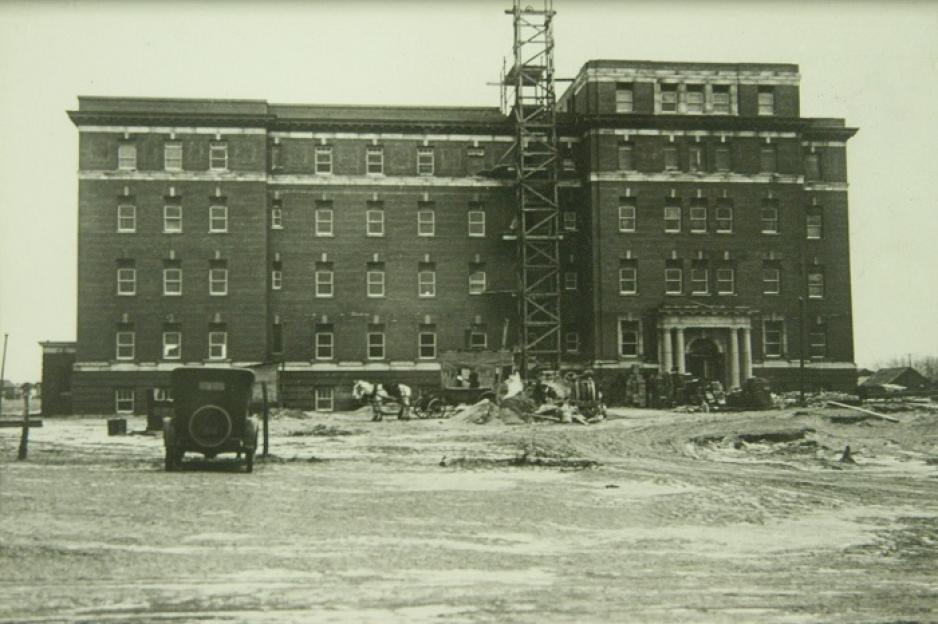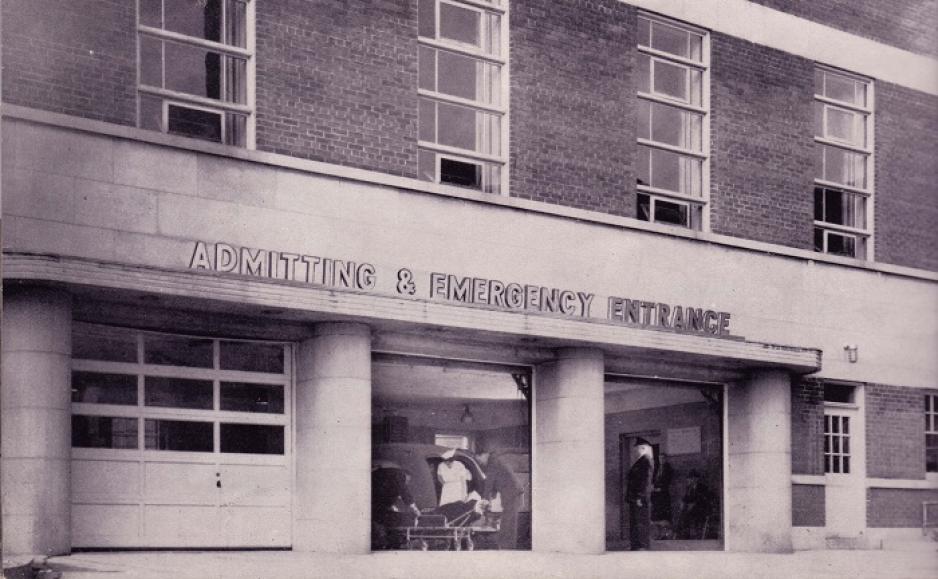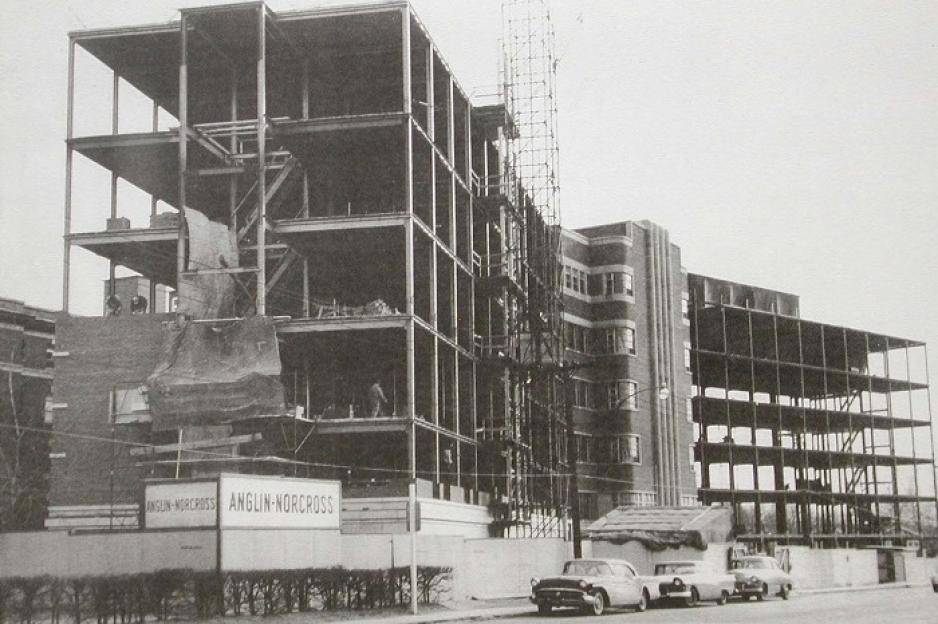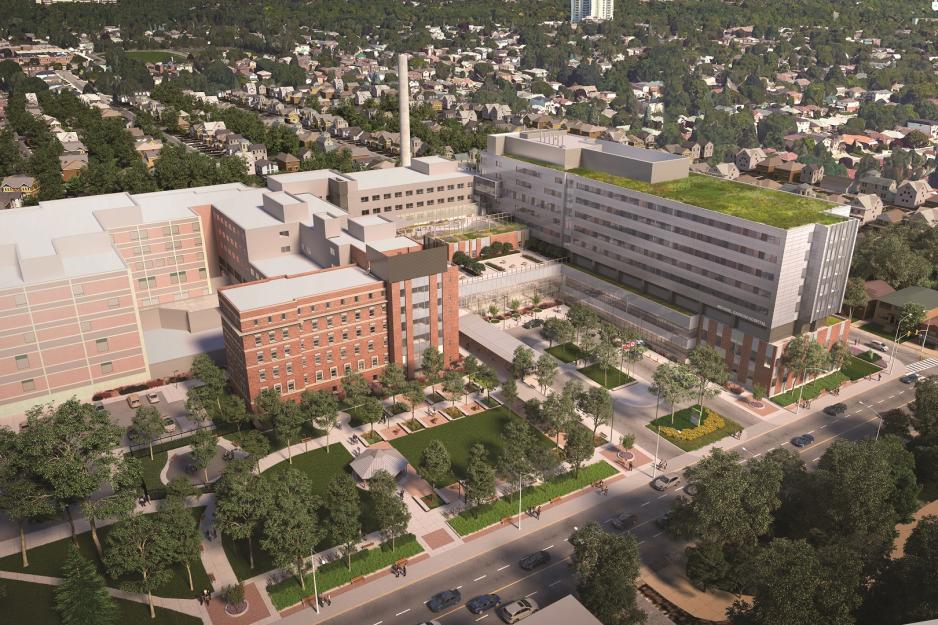When the oldest section of the hospital was built in 1929, the field of medicine was much different than it is today. 90 years ago, many of the medical advances we now take for granted would have seemed like science fiction: the use of ultrasound and magnetic resonance imaging (MRI), pacemakers to regulate heartbeats, and medical robotics to perform surgery.
Where we began
When the first patient was admitted to the brand-new hospital (D-wing) on January 21, 1929:
- Much of the area surrounding the hospital was farmland
- Blood transfusions were new, resulting from the recent discovery of blood types
- The population of East Toronto exploded from 65,000 in 1913 to 131,000 in the early 1920s
In the time since the wings fronting onto Coxwell Avenue and beside Sammon Avenue were built, medical advances have resulted in a stunning increase in life expectancy by nearly a decade. In the 1940s and 50s, physicians were still struggling against infectious diseases like polio that have since vanished from the developed world. Antibiotics to fight infection were new. People still routinely died of tuberculosis.
When the South Pavilion (E- and F-wings) were built in 1944:
- Infectious diseases were still rampant. In 1947, the U.S. introduced a campaign to kill life, fleas and mites with DDT to control typhus
- The new pavilion was reserved to treat close to 5,000 military patients upon opening
- When the recovering soldiers were moved to the new veterans’ facilities at Sunnybrook Hospital, the new pavilion was converted into an obstetrics wing to accommodate the rising number of births as returning soldiers began families
When C-wing (1952) and A- and B-wings (1959) were built:
- The first vaccine to combat polio was introduced
- Surgeons in the United States performed the first open-heart procedure
- The population of East Toronto continued to swell with the baby boom
Where we are now
Our challenges are different now. Diseases that once took thousands of lives are now curable. The prevalence of chronic diseases like type-2 diabetes has skyrocketed, and youth mental health has reached a crisis point: youth suicide rates have multiplied in recent decades. Our community’s health-care needs have also changed with a demographics shift in our community. While our neighbourhoods were predominantly middle- and working-class individuals of British descent when the hospital was built in 1929, today, our community is Canada’s most diverse with a broad spectrum of health-care needs, including more barriers to good health than the general population.
Today:
- The population of East Toronto is approximately 500,000 people
- Medical technology in use at Michael Garron Hospital includes surgical robotics, image-guided laser therapy, and MRI
- 40 per cent of people living in our area are newcomers to Canada, with over 50 languages spoken
It’s hard to provide 21st-century medicine in an aging 20th-century building. And, as we have throughout our proud history, we recognize we must evolve to meet the changing needs of our community. Your support ensures we can keep pace with tomorrow’s medical advances and make sure everyone in our community can reach their greatest potential by renewing our hospital campus. Donate today.



